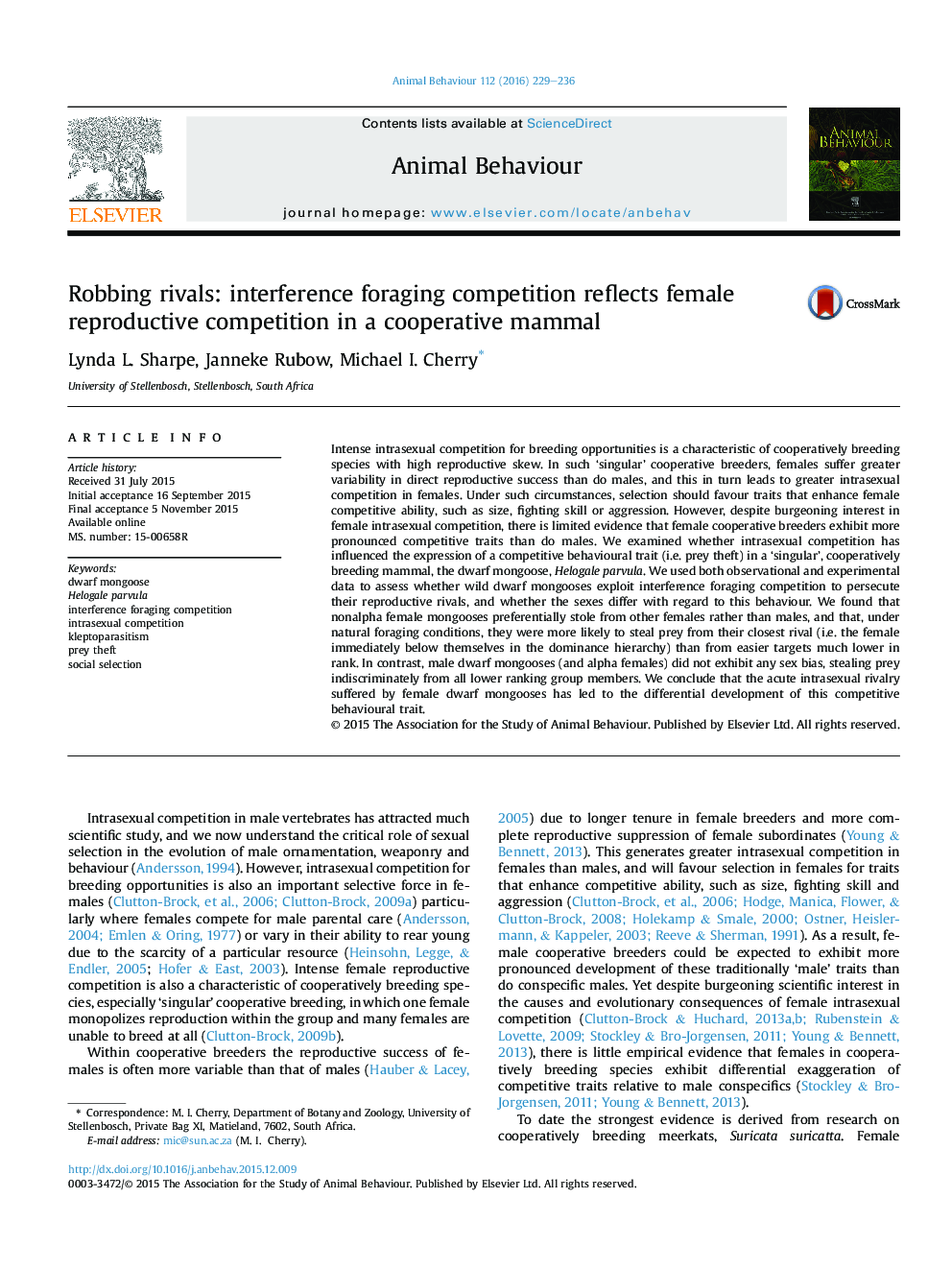| Article ID | Journal | Published Year | Pages | File Type |
|---|---|---|---|---|
| 8489333 | Animal Behaviour | 2016 | 8 Pages |
Abstract
Intense intrasexual competition for breeding opportunities is a characteristic of cooperatively breeding species with high reproductive skew. In such 'singular' cooperative breeders, females suffer greater variability in direct reproductive success than do males, and this in turn leads to greater intrasexual competition in females. Under such circumstances, selection should favour traits that enhance female competitive ability, such as size, fighting skill or aggression. However, despite burgeoning interest in female intrasexual competition, there is limited evidence that female cooperative breeders exhibit more pronounced competitive traits than do males. We examined whether intrasexual competition has influenced the expression of a competitive behavioural trait (i.e. prey theft) in a 'singular', cooperatively breeding mammal, the dwarf mongoose, Helogale parvula. We used both observational and experimental data to assess whether wild dwarf mongooses exploit interference foraging competition to persecute their reproductive rivals, and whether the sexes differ with regard to this behaviour. We found that nonalpha female mongooses preferentially stole from other females rather than males, and that, under natural foraging conditions, they were more likely to steal prey from their closest rival (i.e. the female immediately below themselves in the dominance hierarchy) than from easier targets much lower in rank. In contrast, male dwarf mongooses (and alpha females) did not exhibit any sex bias, stealing prey indiscriminately from all lower ranking group members. We conclude that the acute intrasexual rivalry suffered by female dwarf mongooses has led to the differential development of this competitive behavioural trait.
Related Topics
Life Sciences
Agricultural and Biological Sciences
Animal Science and Zoology
Authors
Lynda L. Sharpe, Janneke Rubow, Michael I. Cherry,
